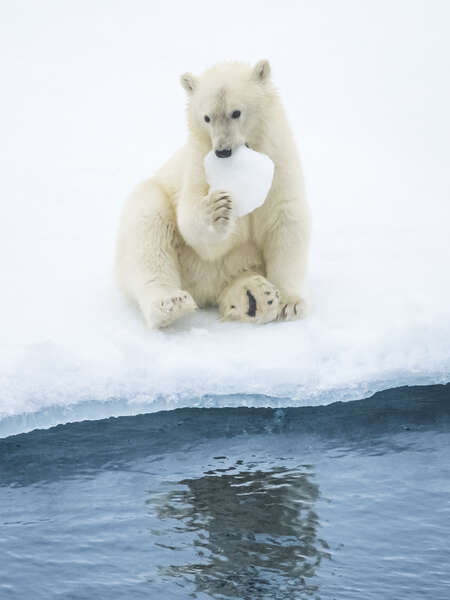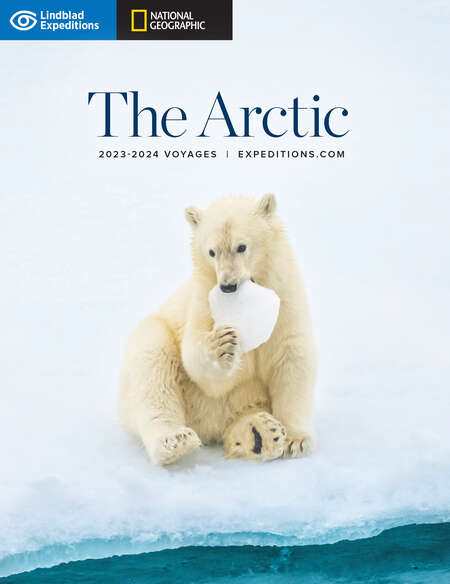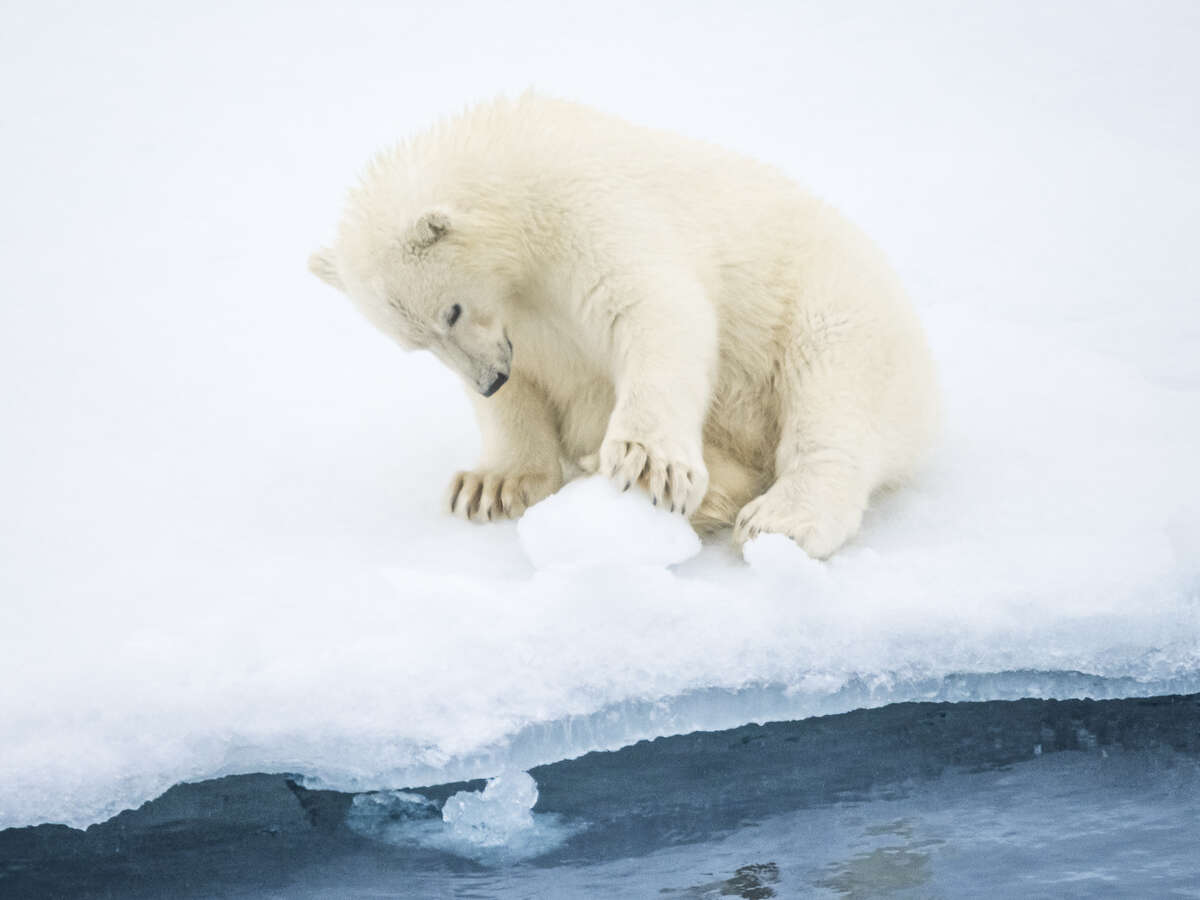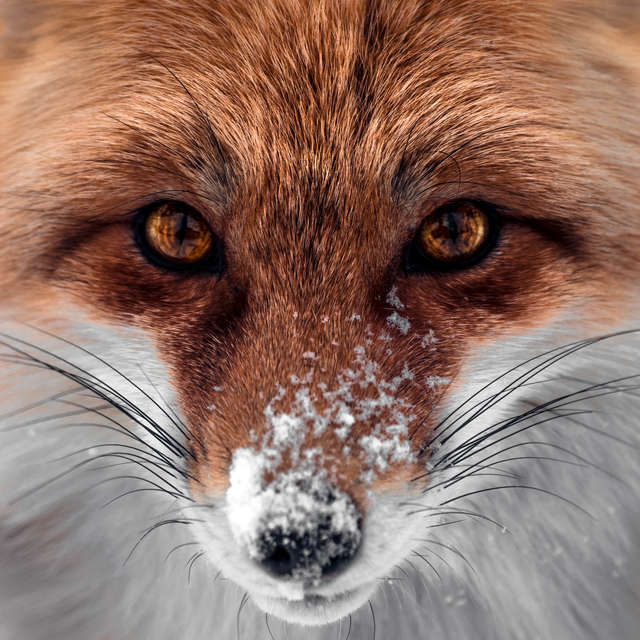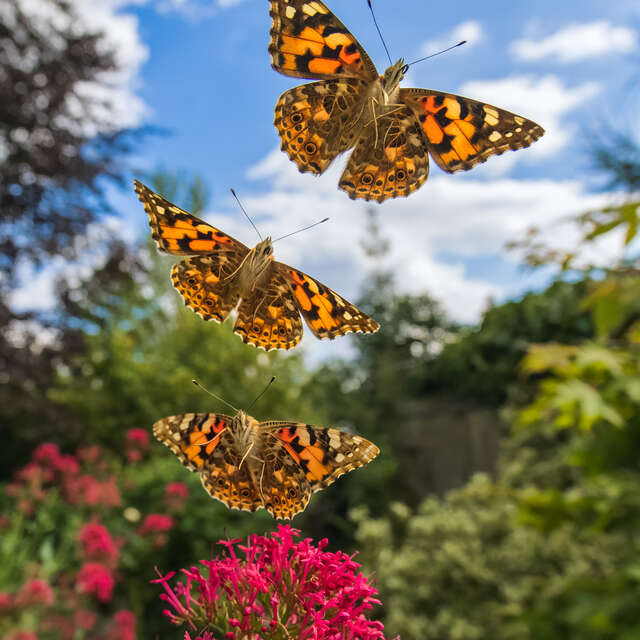Sounds crazy, but I often find myself photographing icy and snowy winter-like scenes in summer. How is this possible? By venturing to the polar regions with Lindblad Expeditions and the National Geographic fleet.
Each year I return to the icy latitudes of the far north and south. It’s an obsession. The explorers called it Polar Fever. I even dream of ice.
During our Northern Hemisphere summer, I travel north to the high arctic of Alaska, Canada, Greenland, and Norway in search of polar bears and other arctic wildlife. In winter, I head south to the White Continent of Antarctica in search of penguins and towering icebergs.
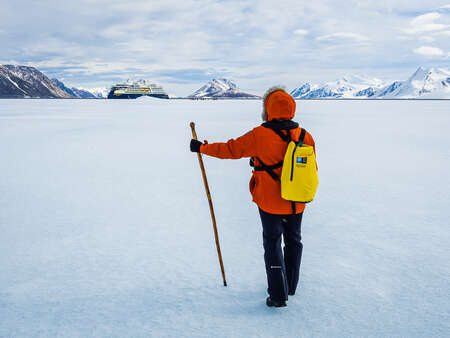
1/500s @ F11| ISO 200
Standing on the frozen Weddell Sea looking back at the National Geographic Endurance parked in the pack ice. Although counter-intuitive, photographing in the white and bright icescapes of Antarctica requires adjusting exposure value compensation (EV plus 1-2 stops) to keep the ice and snow white. Having the +/- button on top of OM cameras makes adjusting EV compensation easy.
For one of my adventures this year I was the National Geographic photographer for a voyage on board the National Geographic Endurance to Antarctica that included visiting the remote archipelago and rarely visited South Shetlands. Late summer found me again on board Endurance, this time navigating the ice-choke Northwest Passage from Nome, Alaska, across Arctic Canada, to western Greenland.
For both of these epic voyages I packed my OM SYSTEM arsenal of gear, which included three camera bodies (OM-D E-M1 Mark III, E-M1X, and OM-1) and an assortment of lenses (14mm F1.8 Fisheye, 8-25 F4, 12-100 F4, 40-150 F2.8, 150-400mm F4.5).
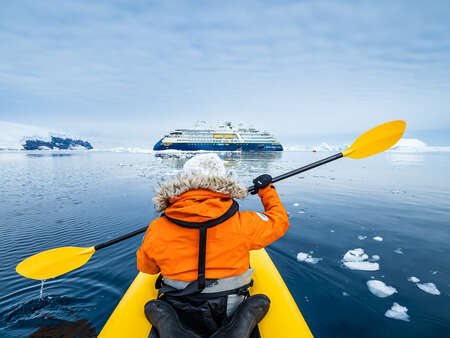
1/500s @ F11| ISO 320
Kayaking icy waters around the National Geographic Endurance offshore remote Peter 1 Island. The compact form factor of OM cameras and sharp optics of wide-angle zooms enable me to shoot point-of-view shots from kayaks. Pro Tip – Always keep your gear in a waterproof stuff-sack when not shooting.

1/1250s @ F8 | ISO 640
It was nearly a white-out blizzard while photographing Adelie penguins assembled on icebergs along the shoreline of the Antarctic Peninsula at Brown Bluff. Om weather-sealed cameras and lenses allowed me to keep working even in blustery conditions. With the right equipment, bad weather offers good opportunities for making great images.
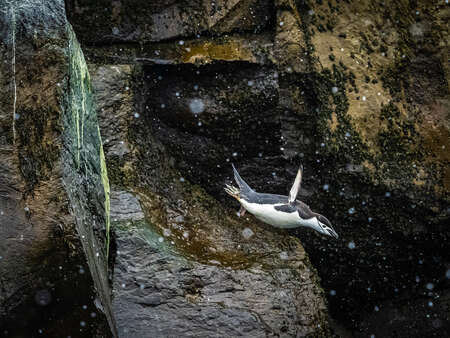
1/2000s @ F5.6| ISO 4000
Can penguins fly? Waves were crashing on the rocks while photographing this cliff jumping “flying” Chinstrap Penguin at Zavodovski Island, South Sandwich Islands, Antarctica. Photographing wildlife from a moving boat requires a fast shutter speed, coupled with the amazing image stabilization of OM cameras.
It's more than a marketing slogan that the OM SYSTEM is the ultimate expedition camera. The smaller format, weather sealed cameras and lenses, and amazing in-camera technology has changed the way I work.
From snowy Antarctic icescapes with penguins down south – to icebergs, polar bears, and the Aurora Borealis up north – I put the OM SYSTEM gear to the test in some of the harshest conditions imaginable.
What follows is a selection of images utilizing a variety of camera and lens combinations, literally from the ends of the earth.
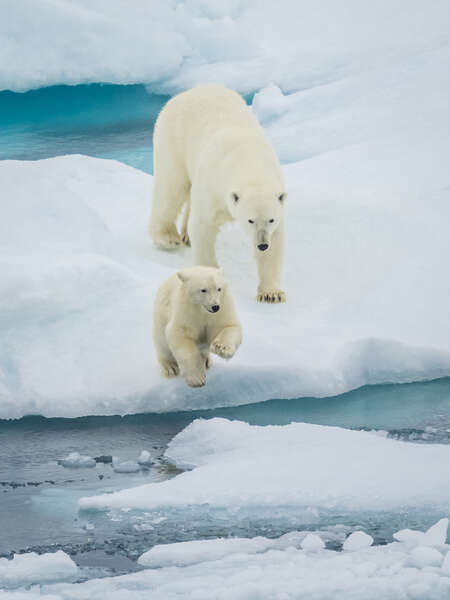
1/1000s @ F5.6 | ISO 800
The National Geographic Endurance was high above the Arctic Circle in the Beaufort Sea of Arctic Canada where we encountered dense pack ice, critical habitat for polar bears hunting seals. There’s no substitute for a high frame rate (sequential burst mode) when shooting wildlife in motion. My OM-1 was set to 10 fps to catch this polar bear cub jumping between ice floes with mom looking on. Look what I can do!
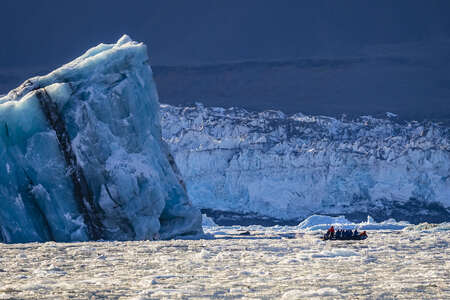
1/2000s @ F5.6 | ISO 500
Zodiac exploring along the front of a tidewater glacier in Northeast Greenland National Park. 7-stop Image stabilization of OM cameras is a game changer for expedition photographers. Never thought I could hand-hold the 150-400 telephoto super-zoom out to 1000mm equivalent. The long zoom compresses the perspective making the iceberg appear even larger. And I’m shooting from a small boat!
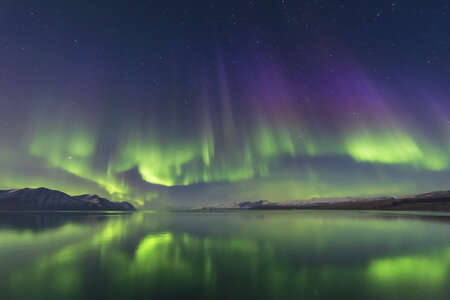
5s @ F1.8| ISO 1600
It was just before midnight when the Northern Lights painted the sky, reflecting on the glassy waters of Kaiser Franz Joseph Fjord in Northeast Greenland National Park. State-of-the-art image stabilization worked its magic shooting on a tripod-mounted OM-1 from the deck of the National Geographic Endurance. Longer exposures help gather more light revealing magenta hues that may not be visible to the eye.
Featured Products:
Colorado-based photographer Ralph Lee Hopkins travels the world with Lindblad Expeditions, National Geographic, and Natural Habitat Adventures. Ralph is founder and director of the Expedition Photography program for the National Geographic fleet. For more than 30 years he has traveled from the Arctic to the Antarctica and points in between.
CONNECT WITH RALPH
Website: Ralph Lee Hopkins
Instagram: @RalphLeeHopkins
